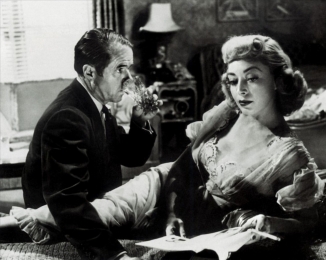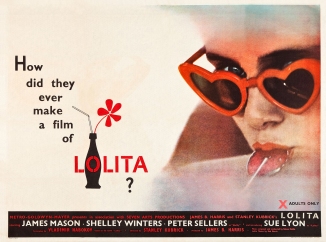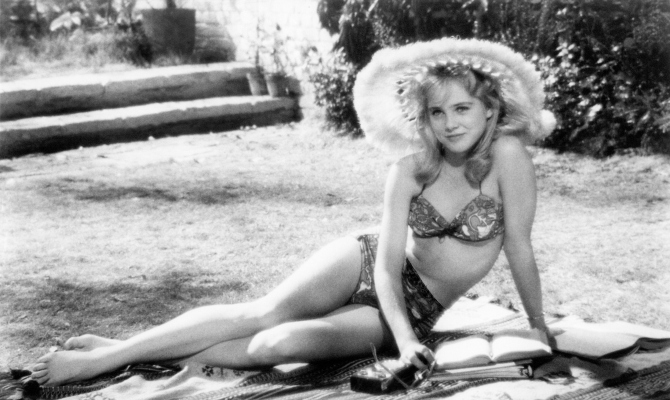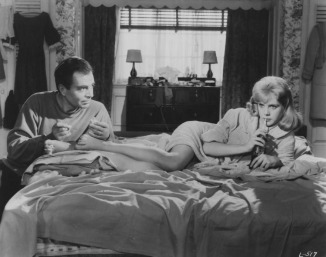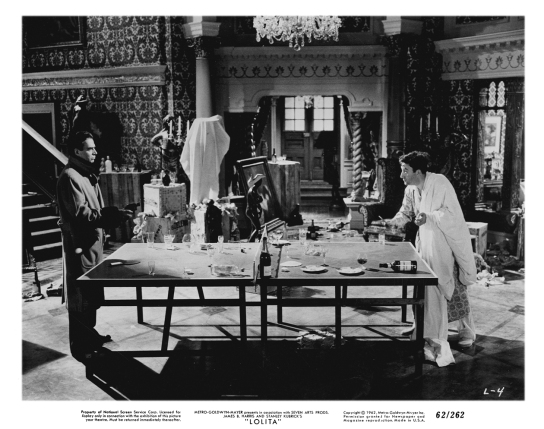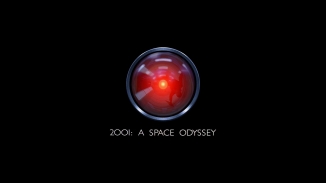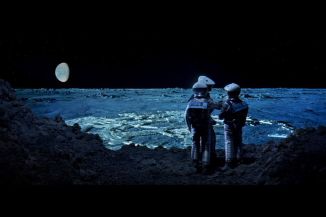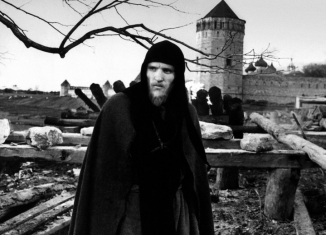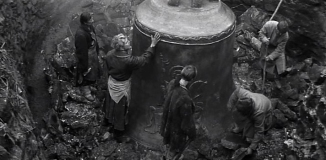 THOUGH INEXTRICABLY BOUND to the 1950s in its setting and culture (from cut-and-paste wise-guys to coarse stereotypes of gender relation), Stanley Kubrick’s ‘The Killing’ thrives today as a forceful and relevant limb of the director’s great body of work. Self-described as Kubrick’s first ‘mature’ film, it is still sufficiently early for many of his iconic techniques to appear in their adolescence—strong enough to stand alone but not yet made rigid and stylized by years of repetition. Most of all ‘The Killing’ is memorable for its progressive structure, disregarding traditional linear timelines and instead leaping back and forth to show disparate characters’ roles in the racetrack heist that defines the plot. Two cameras might be used to film a single sequence, but each focuses on a separate subject and only reveals its footage to us piecemeal, intercut backwards and forwards to keep aces hidden in plain sight until the most opportune moment. It’s a demanding technique that still challenging and fresh in the modern era, used in crime dramas (‘Oceans 11’, ‘Memento’, ‘Heist’, etc.) and comedy alike (‘Arrested Development’).
THOUGH INEXTRICABLY BOUND to the 1950s in its setting and culture (from cut-and-paste wise-guys to coarse stereotypes of gender relation), Stanley Kubrick’s ‘The Killing’ thrives today as a forceful and relevant limb of the director’s great body of work. Self-described as Kubrick’s first ‘mature’ film, it is still sufficiently early for many of his iconic techniques to appear in their adolescence—strong enough to stand alone but not yet made rigid and stylized by years of repetition. Most of all ‘The Killing’ is memorable for its progressive structure, disregarding traditional linear timelines and instead leaping back and forth to show disparate characters’ roles in the racetrack heist that defines the plot. Two cameras might be used to film a single sequence, but each focuses on a separate subject and only reveals its footage to us piecemeal, intercut backwards and forwards to keep aces hidden in plain sight until the most opportune moment. It’s a demanding technique that still challenging and fresh in the modern era, used in crime dramas (‘Oceans 11’, ‘Memento’, ‘Heist’, etc.) and comedy alike (‘Arrested Development’).
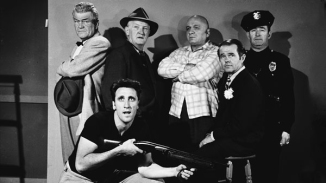 But not all of ‘The Killing’ is innovation. Considerable plot and character inspiration seems to be taken from Jules Dassin’s ‘Night and the City’ (1950) most obviously in how Kubrick’s Maurice is a reflection of Dassin’s Gregorius—an aging, bald wrestler with a philosophical streak who plays the tough frontline role in the machinations of our lanky blonde protagonist (in this case Sterling Hayden as Johnny Clay). The stretch isn’t far: as a young photographer for Look magazine, Kubrick was on-set for some of the filming of Dassin’s ‘The Naked City’, made in 1948. Moreover, ‘The Killing’ doesn’t take great pains to explore each character’s motivations to crime, generally sufficing with a few brief but heavily instructive sketches: an ailing wife, angelic and bedridden; a shady cop’s debt to a loan shark; a man’s financial and physical inadequacy in marriage, etc. But in using such familiar cookie-cut blocks as his foundation, Kubrick has more time to tweak and tease them into new shapes in media res. This keeps the pace snappy and running time lean at 85 minutes—the shortest of Kubrick’s adult career and literally half the length of several later works (e.g. ‘Spartacus‘, only four years later).
But not all of ‘The Killing’ is innovation. Considerable plot and character inspiration seems to be taken from Jules Dassin’s ‘Night and the City’ (1950) most obviously in how Kubrick’s Maurice is a reflection of Dassin’s Gregorius—an aging, bald wrestler with a philosophical streak who plays the tough frontline role in the machinations of our lanky blonde protagonist (in this case Sterling Hayden as Johnny Clay). The stretch isn’t far: as a young photographer for Look magazine, Kubrick was on-set for some of the filming of Dassin’s ‘The Naked City’, made in 1948. Moreover, ‘The Killing’ doesn’t take great pains to explore each character’s motivations to crime, generally sufficing with a few brief but heavily instructive sketches: an ailing wife, angelic and bedridden; a shady cop’s debt to a loan shark; a man’s financial and physical inadequacy in marriage, etc. But in using such familiar cookie-cut blocks as his foundation, Kubrick has more time to tweak and tease them into new shapes in media res. This keeps the pace snappy and running time lean at 85 minutes—the shortest of Kubrick’s adult career and literally half the length of several later works (e.g. ‘Spartacus‘, only four years later).
 Starting with boilerplate characters also affords Kubrick the easy opportunity to skewer stereotypes and pit them against one another in an early trio of trenchant role reversals: the stalwartly masculine Johnny Clay planning ‘one last score’ while enduring the sycophantic outpourings of his girlfriend, Fay (truly); second, the diminutive and doe-eyed George groveling before Sherry, his dismissive, scornful, and substantially taller wife; third, Sherry cuckolding George with tough hood Val, who brushes off her jealously and plays her for profit as ruthlessly as she does George. The juxtaposition of these episodes is fraught with social criticism, but Kubrick leaves the particulars implicit for to the audience to parse—‘The Killing’ has a job to do and no time to spare.
Starting with boilerplate characters also affords Kubrick the easy opportunity to skewer stereotypes and pit them against one another in an early trio of trenchant role reversals: the stalwartly masculine Johnny Clay planning ‘one last score’ while enduring the sycophantic outpourings of his girlfriend, Fay (truly); second, the diminutive and doe-eyed George groveling before Sherry, his dismissive, scornful, and substantially taller wife; third, Sherry cuckolding George with tough hood Val, who brushes off her jealously and plays her for profit as ruthlessly as she does George. The juxtaposition of these episodes is fraught with social criticism, but Kubrick leaves the particulars implicit for to the audience to parse—‘The Killing’ has a job to do and no time to spare.
Despite a stilted depiction of women (a recurring criticism of Kubrick),‘The Killing’ does not much subscribe to the damsel in distress motif of many noir pictures. Sherry is treated with swift brutality that the camera does not exploit: she is knocked unconscious off-screen and unceremoniously dispatched by her half-deranged husband with a single bullet to the midriff. She has a brief moment for a speech before collapsing, yes, but the initial gunshot occurs before the camera cuts to her, echoing the off-screen violence she endured earlier in the film. When we do see her final moments, the camera sits static and somewhat distant on George’s side of the room, almost indifferent to her passing. Instead of pitying her, the audience might mordantly recall the couple’s first conversation in the film—on stomach pains.
The other element of ‘The Killing’ most likely to date it is the narration—a clipped and humorless newsman kind of dictation that sets scenes for us with a timekeeper’s precision. But the tactic is still admissible for how subtly it underscores the setting of the film and actually entrenches us in its environment. Firstly, the focus on time and the relative position of actors against one another parallels that of a racetrack radio announcer; second, it suggests a recitation of a police report, stitching together a story culled from confession. The narration thus becomes a great instance of cinematic foreshadowing, stretching across all of the film’s length without ever technically suggesting the outcome.
 Kubrick, not yet 30 when ‘The Killing’ was released, weaves these many threads with assurance and aplomb. His riveting focus—prolonged, static shots of faces in chiaroscuro; long tracking takes—is prominent throughout the picture, though still more unaffected here than in many later works. The performances from its ensemble cast are equally natural—even Timothy Carey, one of Hollywood’s greatest fringe characters, is reined into a rictus of normalcy. Thus the actual story of ‘The Killing’ is afforded center stage, abetted by Kubrick’s direction but not obscured by his presence and vision. It’s a film that reveals nearly all of Kubrick’s notable talents without showing them off. Certainly, film scholars have plenty to pore over here, from the non-linear plotline to the distinctive blocking techniques used for its different characters, but ‘The Killing’ remains a racing crime film at heart. Speeding unerringly towards that checkered flag, the sudden, shell-shocked despondence of its ending becomes all the more wrenching.
Kubrick, not yet 30 when ‘The Killing’ was released, weaves these many threads with assurance and aplomb. His riveting focus—prolonged, static shots of faces in chiaroscuro; long tracking takes—is prominent throughout the picture, though still more unaffected here than in many later works. The performances from its ensemble cast are equally natural—even Timothy Carey, one of Hollywood’s greatest fringe characters, is reined into a rictus of normalcy. Thus the actual story of ‘The Killing’ is afforded center stage, abetted by Kubrick’s direction but not obscured by his presence and vision. It’s a film that reveals nearly all of Kubrick’s notable talents without showing them off. Certainly, film scholars have plenty to pore over here, from the non-linear plotline to the distinctive blocking techniques used for its different characters, but ‘The Killing’ remains a racing crime film at heart. Speeding unerringly towards that checkered flag, the sudden, shell-shocked despondence of its ending becomes all the more wrenching.
